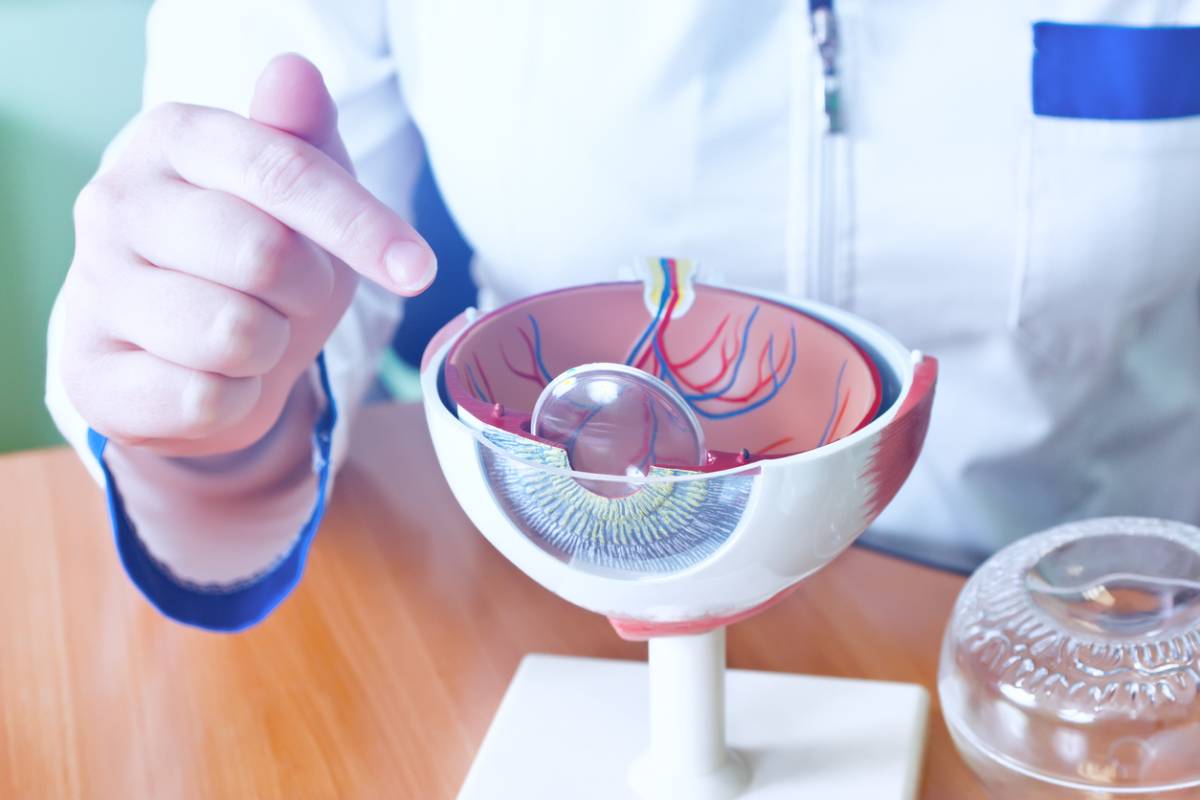The impact of aging can affect your vision in the form of cataracts. In fact, cataracts impacts 22 million Americans over the age of forty. It impacts more than half of Americans over the age of 80. Due to the risk of cataracts for aging adults, it’s important to understand the risk factors and signs. Cataracts and family history are also associated so staying informed is key. Below you will find helpful information regarding cataracts and cataracts treatment so you can ensure your vision is in good shape.
Cataracts and Related Symptoms
Cataracts can impact one or both of your eyes. A cataract is a cloudy, dense area that forms in the lens of your eye. The lens is the clear part of your eye behind the iris (the colored part of your eye) that helps focus light and images onto your retina. Your retina sends signals to your optic nerve, and then your optic nerve sends those signals to your brain. A cataract forms when proteins in your eye from clumps. These clumps prevent your lens from sending clear images to your retina. This can cause symptoms such as blurred vision, difficulty seeing at night, seeing colors as faded, sensitivity to light, double vision, and halos around lights.
Cataracts and Family History & Other Risk Factors
There are a variety of risk factors associated with cataracts. Consider the following risk factors and stay on top of your vision health, especially if any apply to you.
- Family History: For those who have family members who have cataracts, your chances of developing the condition are much greater. Share this information with your eye doctor to ensure they are informed of your risk factors.
- Age: As discussed, age is a serious risk factor of the condition as the majority of those impacted are older adults. While you cannot control this factor, it’s important to visit your eye doctor regularly so they can catch issues with your vision early on.
- Alcohol Use and Smoking: Heavy alcohol use and smoking place you at a higher risk for age-related eye conditions. Refrain from smoking entirely and refrain from drinking more than the recommended daily amount.
- Obesity, High Blood Pressure, and Diabetes: Issues often associated with your weight and physical health can place you at a much higher risk for cataracts. Focus on a healthy diet, regular exercise, and reducing your stress levels.
- Sun Exposure: Research has shown that sun exposure can contribute to the development of cataracts. Wear sunglasses that block UVB light when you are outside to protect your vision while in the sun.
Treatment for Cataracts
In order to get treated for cataracts, an eye doctor will need to perform a comprehensive exam to assess your vision and determine if you have cataracts. This includes an eye chart test and an eye pressure measurement test. Your eye doctor may perform other tests if necessary, but they should be able to diagnose your cataracts within the visit.
The most common and effective treatment option for cataracts is custom cataract surgery in OC. The surgery is focused on your unique needs and aims to treat the cataracts. Without medical intervention, your vision will worsen over time. Cataract surgery is one of the most common and safest surgeries performed in the United States. It’s highly effective in treating the issue and patients report major improvement in their vision.
Orange County Eye Surgeon
If you are concerned you may have cataracts, contact the Dr. Ghosheh at Advanced Eye Medical. He is the top cataract surgeon in Orange County and has helped numerous patients restore their vision. Contact the top Orange County eye surgeon today for a consultation!

